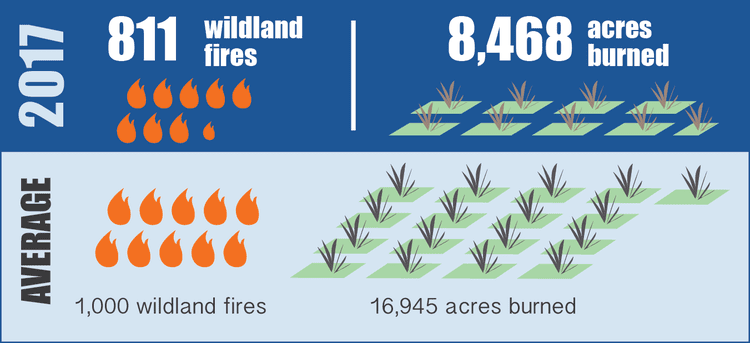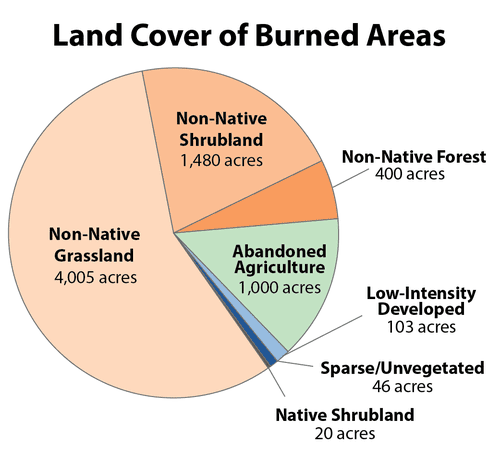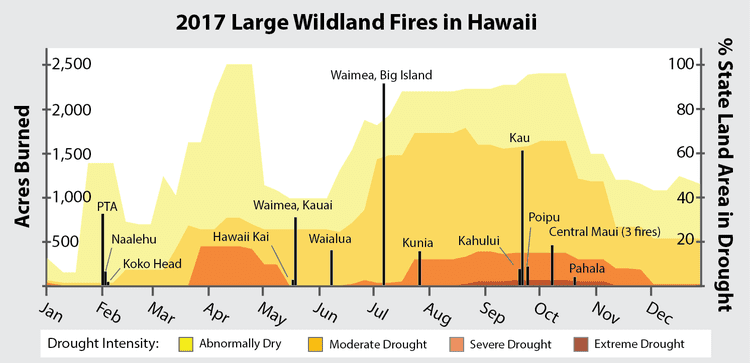Every wildfire incident is part of a larger pattern of wildfire occurrence and is an opportunity to gain experience and insight for wildfire management. View the 2017 Wildfire Summary for Hawaii.
Tags: Annual Wildfire Summary, Hawaii


Every wildfire incident is part of a larger pattern of wildfire occurrence and is an opportunity to gain experience and insight for wildfire management. Taking a look at both the big picture and individual fires can: Deepen and expand our understanding of wildfire drivers, behavior, and response; improve wildfire response, management, and science; reduce negative impacts on individuals, communities, natural resources, and response agency budgets.
Causes
It's often hard to determine the exact cause of each wildfire, but we know people cause nearly all fires in Hawaii. Please report suspicious activity to authorities (call 911) and take precautions during dry, windy weather. For example, avoid using machinery, do not park in tall grass, and extinguish BBQ pits and campfires.

Agricultural Lands
One thousand (1,000) acres burned in recently abandoned agricultural fields, with 600 acres in former sugar fields in Central Maui alone.
These incidents illustrate how non-native grasslands and shrublands, particularly in the wake of declining agriculture, increase fire risk to residential areas and natural resources and increase the burden placed on county, state, and federal fire responders.
Wildland Urban Interface
In 2017 several fires came close to and impacted residential areas. A 156-acre fire in Naalehu on the Big Island came within several hundred yards of homes. Multiple fires occurred just above homes in Kamilo Nui Valley in Hawaii Kai on Oahu, the largest of which burned 65 acres. Two small fires burned adjacent to homes in Paia on Maui and a 356-acre fire came close to homes in Kunia on Oahu in July. A single home was lost in the Waimea fire on the Big Island.

Hawaii's wildfire season is year-round. Several of 2017's significant fires occurred in February. Fire activity increased in the summer months and continued through October - due, in part, to drought across most of the state (see Fig. 2).
Nearly all fires occurred on days with high winds and dry conditions (i.e., maximum wind speeds over 20 mph and relative humidity less than 50%) (3).
